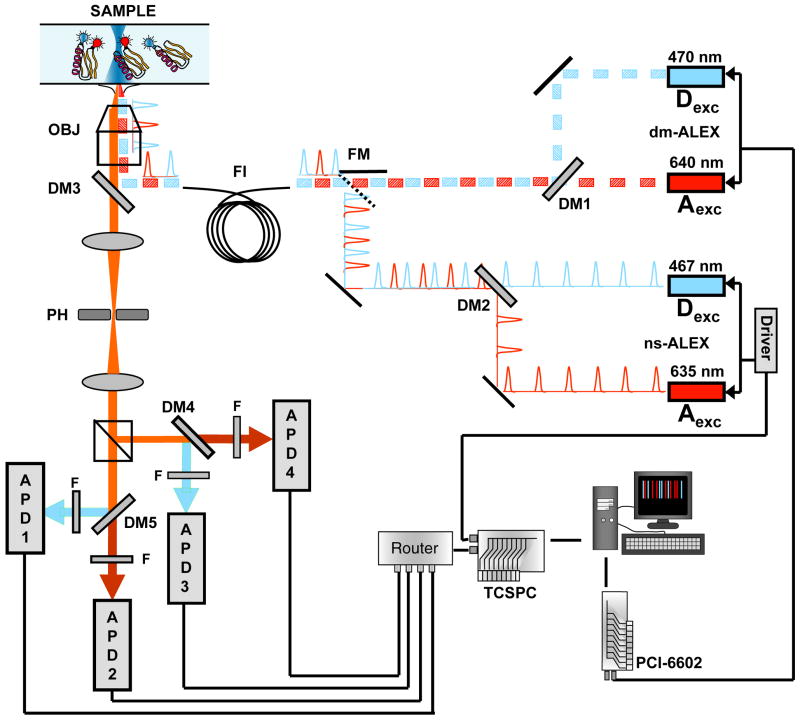Figure 3.
Combined dm-ALEX/ns-ALEX set-up. The two picosecond pulsed lasers are synchronized with the same driver. Their beams are combined with a dichroic mirror DM2 (550DRLP, Omega Optical, Brattleboro, VT) and coupled into an optical fiber (QSMJ-A3A, 3AF-488-3.5/125-3-2, OzOptics, Ottawa). Alternatively, the beams of the CW iPulse and the iBeam are directly modulated by the DAC board (National Instruments, Austin, TX, PCI-6602), and are combined and coupled into the same fiber in a similar fashion. Switching between the two excitation schemes is achieved through the flippable mirror (FM) just before coupling the light into the fiber. The light output of the fiber is collimated, polarized and reflected by DM3 (400-535-635TBDR, Omega Optical, Brattleboro, VT), and focused by the microscope objective (100X Apochromat, NA 1.4, Zeiss, Jiena) into the sample. Collected photons are split by a polarizing beam splitter (PBS) into vertical (V) and horizontal (H) polarizations, and split again by DM3 and DM4 (630DRLP, Omega Optical, Brattleboro, VT) into D and A emissions. Bandpass filters BP1-BP4 (BP1&3: 580DF30; BP2&4: 661AGLP, Omega Optical, Brattleboro, VT) are used to exclude photons of the incorrect wavelength. The signals are detected by avalanche photodiodes APD1-APD4 (SPCM-AQR-14, PerkinElmer, Fremont, CA).

